Section II of the booklet “50 years of the Amersham Society” covers the following chapters: Early Newsletters and publications · A permanent home for the Museum · Fund raising · Restoration of 49 High Street · A new curator and an unexpected artefact · The Official opening of the Museum.
Early Newsletters and publications
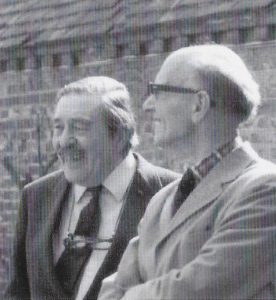
A proper Society Newsletter was begun in 1981, containing historical notes as well as news of events, thanks to the efforts of Anne Mills. Prior to this date, members had received a duplicated typewritten news-sheet from Frank Peers who had been the Hon. Secretary from 1971. The Newsletter has been further improved over recent years and now covers Society news, reports of meetings, lectures and outings and articles on local history and recent research, and a separate section outlining current events in the Museum. In 1982 the Society was authorised to reprint Thomas King’s “History of Amersham” for sale to raise funds, a publication which remained on sale until 2005.
In 1982, the Society was prominent in offering support for the ‘yellow route” for the proposed by-pass around the town, the route which was eventually agreed and built. The alternatives would have been disastrous: either too close to the Old Town or so far away that drivers might not have used the bypass at all. It was, however, disappointing that having built the bypass to remove the traffic, the Tesco supermarket was later approved, bringing much traffic back.
The Society contributed to the Market Hall Tercentenary celebrations and again organised a successful children’s competition for the event. The Society was responsible for the erection of a Tourist Information Board near the Memorial Gardens in 1983, encouraging visitors to explore the Old Town.
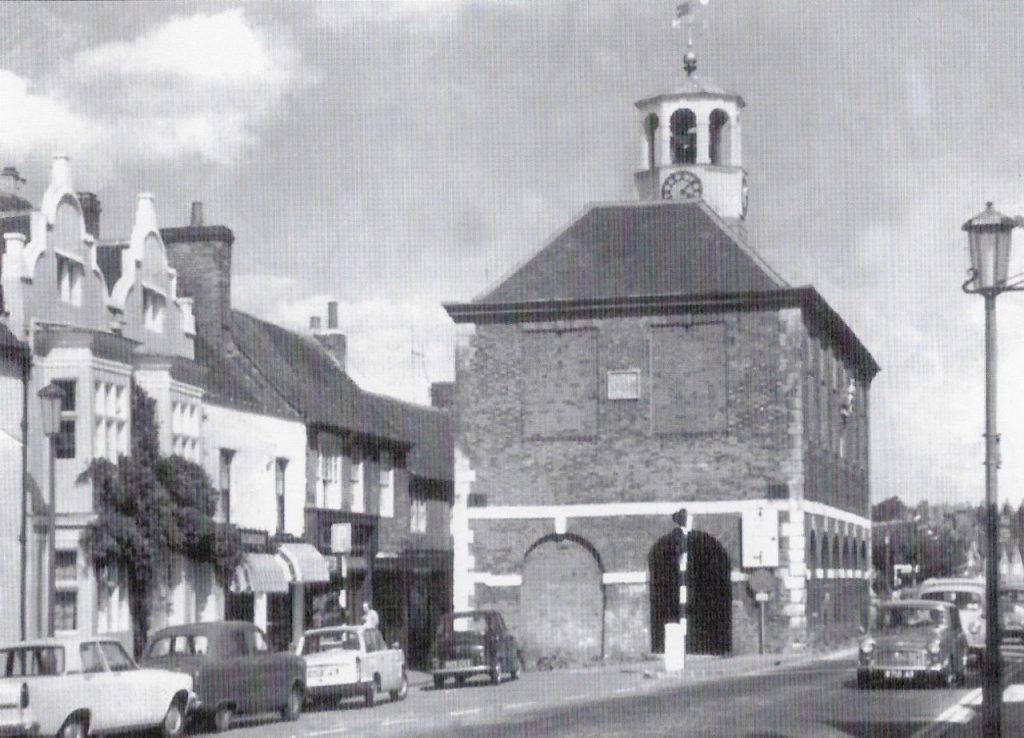
Garden parties had always been a much-enjoyed way to raise funds, and until 1983, Society parties had been held in Mill Meadow, to raise funds, by kind permission of the Kelley family. Since 1983 Charles and Judith Goodwyn have regularly allowed the Society to use their delightful garden at Hinton House for this purpose, where members have enjoyed warm hospitality and added to the funds for the Museum; we have much cause to be grateful for their generosity over many years, not least for our 50th Anniversary Garden Party in 2006.
Sadly, Vera Bridgstock Choat died on 25th September 1983, ending the important contribution she and her husband had made to the establishment of the Society and bringing the idea of a museum to fruition.
A permanent home for the Museum
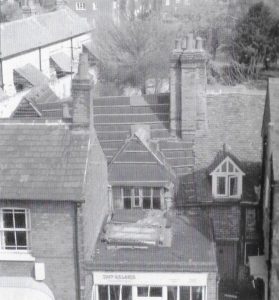
Also in 1983 came the good news that the Society might be able to acquire a permanent home for the Museum, No. 49 High Street, recently the home of Mr. Toovey, and in the spring of the following year the Society decided to acquire the premises. No. 49 High Street was part of a Hall House reputedly dating from the mid-15th century and possibly the oldest house surviving in the town. It was in a sorry state but deemed worthy of restoration with potential for conversion to become a definitive Museum.
Initially the house was purchased for £64,000 by the newly-formed Buckinghamshire Historic Buildings Trust – and the Amersham Society was given nine months to raise the money to repay the loan. The Society set up the Amersham Historic Buildings Trust Limited as a registered charity and launched a Museum Appeal for £100,000 for the house purchase and restoration. With the help of a further loan from the Architectural Heritage Fund, the initial loan was repaid on time and in January 1985 the Amersham Historic Buildings Trust bought the house.
Fund raising
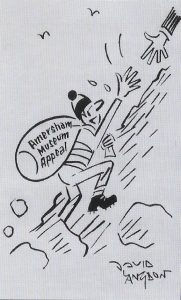
The Museum Appeal Committee worked very hard to raise the necessary funds. The Patrons of the appeal were Val Biro, Michael Denison and Dulcie Gray, Sir Ian Gilmour MP, Roger Parker-Jervis, Sir Oliver and Lady Popplewell and Captain F. Tyrwhitt-Drake. Philip Plumbly, then the Hon. Treasurer, started the ball rolling by raffling a doll for a few pounds. The Appeal committee was chaired by Eric Corns, the other members being Anthony del Tufo, Brian Fuller, Chris Parrott and Philip Plumbly. Donations included £6,450 from the Gresham Trust, £5,000 each from Amersham International Ltd. (now GE Healthcare), Amersham Town Council, ‘ Chiltern District Council, The Pilgrim Trust and the Lankelly Foundation; £3,000 was given by the Buckinghamshire Historic Buildings Trust and many other organisations and private individuals gave generously.
Anthony del Tufo, Eric Corns and Philip Plumbly took on the task of organising the appeal and eventually securing the large sum needed to see the project through. Eric Corns set up a weekly stall under the Market Hall, which he manned for many years; other volunteers assisted Eric from time to time, but he was there every Saturday, only allowing himself an hour or two ‘off duty’ to watch the rugby! Support came from many fund-raising events including jumble sales, coffee mornings, supper parties, musical events, garden parties, raffles, antique and craft fairs, sponsored walks and a trolley-dash. A “Founder Friends of the Museum” scheme was initiated for those who donated £70 or more by Deed of Covenant.
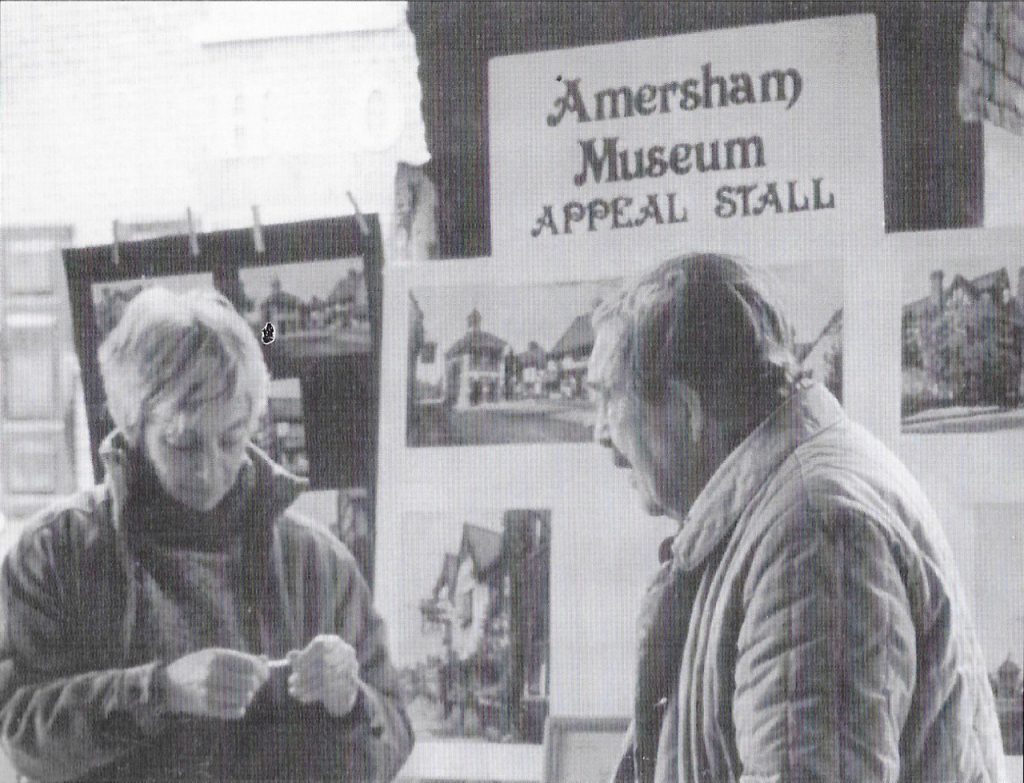
Restoration of 49 High Street
Following surveys and an archaeological dig, the restoration of the building began in November 1986, with preliminary clearing of debris by members of the committee and a band of volunteers. Some major work on the timber frame and the roof of the building was carried out by the late Chris Wallis (son of the celebrated inventor, Barnes Wallis) of Millrights International. By 1987 it had become clear that although the money from the appeal was coming in well, a further £20,000 would be needed to complete the work. Planning problems had to be overcome and by 1988 progress had become painfully slow and enthusiasm had begun to flag.
In 1989 a keen body of volunteers, ably led by Jim Olney and Brian Fuller worked tirelessly, mainly at weekends, to complete the restoration. They were later to be made Honorary Friends of the Museum in recognition of all they had contributed. Local firms such as A. & R. Building Supplies were generous in providing materials; Ercol gave fine seasoned elm to replace rotted timber flooring upstairs.
A new curator and an unexpected artefact
Monica Mullins was appointed Honorary Curator to succeed Jane Berry in 1984 and she and Peter Leder did a splendid job keeping the museum room in the British Legion functional whilst No. 49 High Street was being restored. Monica catalogued and sorted the existing collection of documents and artefacts, and many new items were donated as interest in the coming permanent Museum grew.
Monica was however a little disconcerted when an incendiary bomb, which had been dropped in a field at Ballinger during the war, was donated. It was thought to be suspiciously heavy and the Army Bomb Squad, who were called in, declared it to be potentially lethal then took it away and blew it up. The Museum lost a possible exhibit in a puff of smoke! Monica set about designing the showcases and exhibits for the new Museum and a further appeal was launched in 1989 for £55,000 to design, equip and furnish it – the object being to retain sight of the structural timbers as much as possible whilst maximising the space available for displays.
No. 49 was opened on occasion so that supporters of the project could see the progress made. Special cabinets and display cases were commissioned and sponsored by Friends to be ready for the great day. A start was made on the garden in 1988 with Adventure Scouts helping to clear enough accumulated rubbish to fill more than six skips! The single-storey lock-up shop in front of the building was retained and re-let to provide much-needed income in the early years.
The Official opening of the Museum
Eventually everything was prepared and in place and on 23rd March 1991 the permanent Amersham Museum was officially opened by the Earl and Countess Howe. Although it was two years behind the original schedule it was a great credit to all those concerned in the project, particularly Eric Corns and Anthony del Tufo, who had been the driving forces behind it. The Appeal Fund had by then reached the magnificent total of £163,700. There were over 3,000 visitors in the first year including many school parties.
The old barn in the garden, shared with the neighbouring property, was restored to provide toilet facilities and some storage. The planting of the herb garden was carried out by Julia Godwin and Di Denny in 1992, adding a delightful new perspective to the Museum’s displays.
The real highlight of that year was the news that the Museum had been awarded the National Heritage Museum of the Year, the “Shoestring Award” for the museum managing to do the most with the least. There was special acclaim for the great team effort and for the design work of the curator Monica Mullins. It is difficult to realise that all her hard work was done from her home, while adding the use of a computer to her many skills; Bill and Monica even hosted stewards’ meetings in their home.
